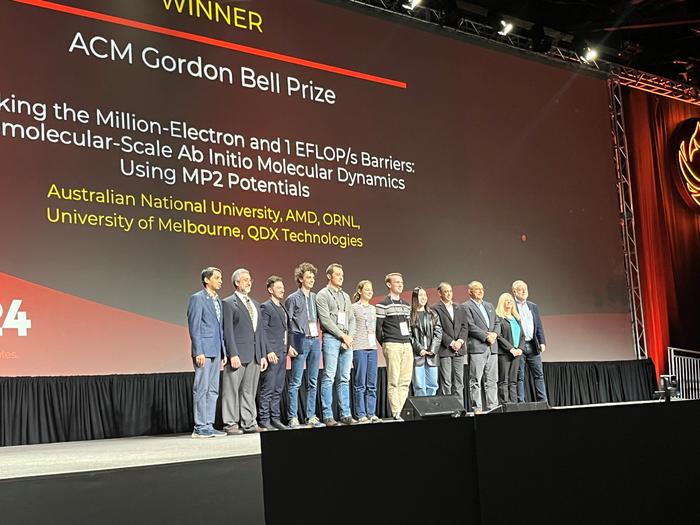Scientists have achieved a remarkable leap in computational chemistry, simulating over a million electrons in molecular systems while processing a quintillion calculations per second. This breakthrough brings us closer to understanding complex biological systems and developing new medicines, materials, and environmental solutions.
Published in ACM High Performance Computing | Estimated reading time: 5 minutes
Sometimes, to understand the very small, you need something incredibly big. That’s exactly what an Australian-American research team demonstrated when they used Frontier, the world’s fastest exascale supercomputer, to shatter previous limits in molecular simulation.
The achievement, which earned the team the 2024 ACM Gordon Bell Prize, represents a thousand-fold improvement in both the size of systems that can be simulated and the speed at which these simulations run. This isn’t just about breaking records – it’s about unlocking new possibilities in drug development, biofuel production, and materials engineering.
Traditional molecular dynamics simulations have long struggled with a fundamental trade-off: achieve high accuracy but simulate only small systems, or model larger systems with reduced accuracy. The research team found a way around this limitation by combining two approaches: molecular fragmentation and MP2 perturbation theory.
Using Frontier’s massive computational power, they performed simulations on molecular clusters containing over two million electrons, utilizing 9,400 nodes of the supercomputer. The calculations achieved an efficiency of 59% of the machine’s theoretical peak performance while using 99.9% of its capacity – remarkably high numbers for such complex computations.
“This leap forward is not merely incremental,” the team noted in their paper. “It redefines the boundaries of what is computationally feasible in molecular dynamics, setting a new benchmark for accuracy and efficiency in large-scale simulations.”
The implications extend far beyond the computational achievements. This breakthrough could accelerate the development of new medications by allowing more accurate simulations of drug interactions with biological systems. It could help design more efficient biofuels and advance our understanding of complex biological processes that have been too large to simulate accurately until now.
The work demonstrates how the advent of exascale computing – machines capable of a quintillion calculations per second – is transforming our ability to understand the molecular world that underpins biology, chemistry, and materials science.
Glossary:
- Molecular Dynamics
- A computer simulation method that models the physical movements and interactions of atoms and molecules.
- Exascale Computing
- Computing systems capable of performing a quintillion (billion billion) calculations per second.
- Ab Initio Calculations
- Calculations based on fundamental laws of nature rather than experimental data or simplified models.
How many electrons could the team simulate in their molecular system?
The team achieved simulation of over two million electrons in their molecular cluster.
What percentage of Frontier’s theoretical peak performance did the calculations achieve?
The calculations achieved 59% of the machine’s theoretical peak performance while using 99.9% of its capacity.
How much larger is this simulation compared to previous capabilities?
The simulation is 1,000 times larger in system size than the existing state-of-the-art, and processed 1,000 times faster.
What are some potential applications of this breakthrough?
Applications include developing therapeutic drugs, producing biofuels, recycling plastics, and engineering medical biomaterials.
Enjoy this story? Subscribe to our newsletter
If our reporting has informed or inspired you, please consider making a donation. Every contribution, no matter the size, empowers us to continue delivering accurate, engaging, and trustworthy science and medical news. Independent journalism requires time, effort, and resources—your support ensures we can keep uncovering the stories that matter most to you.
Join us in making knowledge accessible and impactful. Thank you for standing with us!

